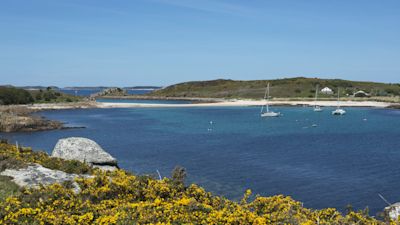Isles of Scilly emerged from single island over thousands of years, according to new study

A new study has discovered that the Isles of Scilly that we know today came from a single island less than 1,000 years ago
The Isles of Scilly is made up of a collection of 140 islands off the coast of Cornwall.
But, researchers led by a team at the University of Exeter have reconstructed sea level rise to produce maps of how the coast has changed over 12,000 years. They examined this alongside changes in landscape, vegetation and human population taken from archaeological and other evidence.
Their findings showed that, during a period between 5,000 and 4,000 years ago, land was becoming rapidly submerged by water but people appeared to adapt to - rather than abandon - the new landscape.
By the Bronze Age, records suggest the area had a permanent population, with more people arriving.
Researchers say the reasons for this are unclear but one possibility is that new shallow seas and tidal zones provided opportunities for fishing, collecting shellfish and hunting wildfowl.
This period of rapid land loss happened at a time of relatively slow sea level rise, as a large amount of Scilly's land at that point was flat and close to sea level.
The study has found that between 5,000 and 4,000 years ago, land was being lost at a rate of 10,000 square metres per year - equivalent to a large international rugby stadium.
Robert Barnett of the University of Exeter, says: "When we're thinking about future sea level rise, we need to consider the complexity of the systems involved, in terms of both the physical geography and the human response.
"The speed at which land disappears is not only a function of sea level rise, it depends on specific local geography, landforms and geology."
READ MORE: